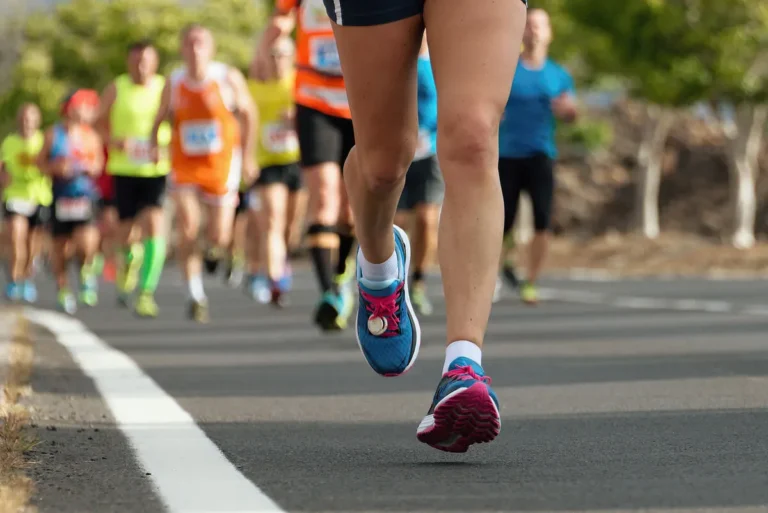What Are Common Running Back Injuries?
Running backs are a vital part of any football team, often bearing the brunt of physical play. As a result, they are prone to certain types of injuries. Understanding these common injuries can help players, coaches, and fans appreciate the physical demands involved.
ACL tears, concussions, and hamstring strains are among the most frequent injuries that impact running backs. An ACL tear is a severe injury to the knee ligament that often requires surgery and extensive recovery time. Concussions, resulting from high-impact collisions, can have serious long-term effects on cognitive health if not managed properly. Meanwhile, hamstring strains typically occur from sudden acceleration or changes in direction, which are common running injuries.
Statistically, these injuries are prevalent among running backs more than any other position. According to recent studies, running backs accounted for 30% of ACL tears in professional football leagues in the last decade. Concussions also remain alarmingly high due to the nature of the sport. Regular analysis and statistical monitoring are crucial in addressing and ultimately reducing the incidence of these injuries.
By acknowledging the prevalence and types of injuries running backs face, it’s possible to take proactive measures to protect players. Awareness can lead to better prevention techniques, faster response times when injuries occur, and more comprehensive recovery plans. Understanding and addressing these injuries empowers players to maintain their health and extend their careers.
Schedule your appointment today at Bull City PT’s Durham or Brier Creek offices.
How Can Running Back Injuries Be Prevented?
Effective injury prevention for running backs involves a comprehensive approach combining training, equipment, and innovative methods. It’s essential to focus on building strength, flexibility, and endurance to better withstand the physical demands and reduce injury risk.
Importance Of Training And Conditioning
Training and conditioning play a crucial role in preventing injuries. Running backs should follow a structured regimen that enhances muscular strength, particularly in the legs and core. Exercises like squats, lunges, and plyometric drills are beneficial in building the necessary muscle resilience. Incorporating flexibility exercises, such as yoga or dynamic stretching, can help maintain a range of motion and prevent strains.
Role Of Protective Equipment
Using the right protective equipment is essential. Properly fitted helmets and pads can protect against concussions and other traumatic injuries. It’s also important to ensure shoes provide adequate support and traction to prevent slips and falls, which can lead to ankle and knee injuries.
Innovative Techniques And Technologies In Prevention
Advancements in technology offer new methods for injury prevention. Motion capture systems and wearable sensors can analyze movements and identify areas where an athlete may be predisposed to injury. Additionally, training programs that include virtual reality can simulate various in-game scenarios, helping athletes practice safe movement patterns.
By integrating a well-rounded strategy that includes conditioning, equipment, and modern technologies, running backs can significantly reduce their risk of injuries and maintain optimal performance on the field.
What Is The Recovery Process For Running Back Injuries?
The recovery process for running back injuries is a critical and structured journey that involves rehabilitation, patience, and a commitment to rebuilding strength and functionality. The path to full recovery is often guided by healthcare professionals and tailored to the specific needs of the athlete to ensure a safe and successful return to the field.
The first stage in the recovery process typically involves an evaluation and diagnosis by medical professionals to determine the severity of the injury. For example, an ACL tear or a hamstring strain will require different approaches in terms of timelines and rehabilitative exercises. It is important to follow a personalized plan designed to address the injured area and any related functional impairments.
Rehabilitation Best Practices
Rehabilitation is a key component of the recovery process. It involves a structured regimen of physical therapy for running that focuses on restoring strength, flexibility, and range of motion. Best practices during rehabilitation generally include exercises tailored to the specific needs and recovery goals of the athlete, ensuring the rebuilding of muscle tissues and joint stability.
A critical aspect of rehabilitation is consistency and adherence to the prescribed routine. Physical therapists may incorporate modalities such as manual therapy, specific stretching techniques, and strengthening exercises into the recovery plan. These practices not only facilitate healing but also work to prevent future injuries through building resilience and adaptability in the athlete’s body.
Expected Recovery Timelines
The timeline for recovery can vary significantly depending on the type of injury, the severity, and the individual’s response to treatment. Minor injuries such as mild hamstring strains might allow a return to play in a few weeks, while more severe conditions like ACL tears can require several months of focused rehabilitation. Patience and adherence to medical advice are crucial for a successful recovery.
Physiotherapy And Medical Interventions
Throughout the recovery process, physiotherapy plays a pivotal role and can include a combination of guided exercises, strength conditioning, and other therapies such as hydrotherapy or acupuncture. In certain cases, medical interventions like surgery might be necessary, with physiotherapy assisting both pre- and post-operation to maximize recovery outcomes.
Partnering with the right therapy provider can make a significant difference in achieving a full recovery and minimizing future injuries. At Bull City PT, our expert physical therapists are dedicated to offering personalized treatment plans that empower athletes to achieve a full recovery. Live a stronger, pain-free life and get back to doing what you love with our innovative and comprehensive approach, no need for a doctor’s prescription. Get started today!







